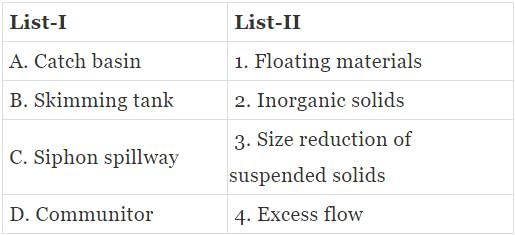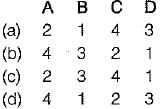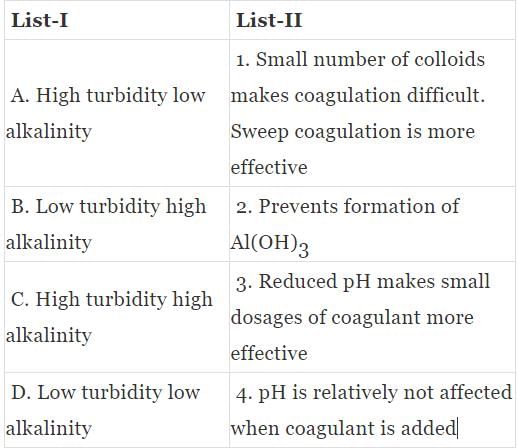Civil Engineering (CE) Exam > Civil Engineering (CE) Tests > Test: Purification of Water - 2 - Civil Engineering (CE) MCQ
Test: Purification of Water - 2 - Civil Engineering (CE) MCQ
Test Description
10 Questions MCQ Test - Test: Purification of Water - 2
Test: Purification of Water - 2 for Civil Engineering (CE) 2025 is part of Civil Engineering (CE) preparation. The Test: Purification of Water - 2 questions and answers have been prepared
according to the Civil Engineering (CE) exam syllabus.The Test: Purification of Water - 2 MCQs are made for Civil Engineering (CE) 2025 Exam.
Find important definitions, questions, notes, meanings, examples, exercises, MCQs and online tests for Test: Purification of Water - 2 below.
Solutions of Test: Purification of Water - 2 questions in English are available as part of our course for Civil Engineering (CE) & Test: Purification of Water - 2 solutions in
Hindi for Civil Engineering (CE) course.
Download more important topics, notes, lectures and mock test series for Civil Engineering (CE) Exam by signing up for free. Attempt Test: Purification of Water - 2 | 10 questions in 30 minutes | Mock test for Civil Engineering (CE) preparation | Free important questions MCQ to study for Civil Engineering (CE) Exam | Download free PDF with solutions
Test: Purification of Water - 2 - Question 1
Match List-I with List-II and select the correct answer using the codes given below the lists:

Codes:


Codes:

Detailed Solution for Test: Purification of Water - 2 - Question 1
Test: Purification of Water - 2 - Question 2
The most commonly used adsorbent for water purification is
Test: Purification of Water - 2 - Question 3
Match List-l with List-ll and select the correct answer using the codes given below the lists:

Codes:


Codes:

Detailed Solution for Test: Purification of Water - 2 - Question 3
Test: Purification of Water - 2 - Question 4
Consider the following statements:
1. Most colloidal particles in water are negatively charged.
2. The surface charge on colloidal particles is the major contributor to their long term stability.
Which of these statements is/are correct?
Detailed Solution for Test: Purification of Water - 2 - Question 4
Test: Purification of Water - 2 - Question 5
What is the ratio of rate of back-washing to that of filtration in a typical rapid sand filter?
Test: Purification of Water - 2 - Question 6
In what intervals are rapid-sand filters to be cleaned by backwashing?
Test: Purification of Water - 2 - Question 7
The clariflocculator will occur in which of the following things?
Detailed Solution for Test: Purification of Water - 2 - Question 7
Information about Test: Purification of Water - 2 Page
In this test you can find the Exam questions for Test: Purification of Water - 2 solved & explained in the simplest way possible.
Besides giving Questions and answers for Test: Purification of Water - 2, EduRev gives you an ample number of Online tests for practice
Download as PDF



















